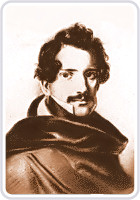This article needs additional citations for verification. (October 2007) |
| Romanesco | |
|---|---|
| Romano | |
| Native to | Italy Vatican City |
| Region | Metropolitan City of Rome Capital, Lazio |
| Latin | |
| Language codes | |
| ISO 639-3 | – |
| Glottolog | None |
| Linguasphere | 51-AAA-rab |
 | |
Romanesco (Italian pronunciation: [romaˈnesko]) is one of the Central Italian dialects spoken in the Metropolitan City of Rome Capital, especially in the core city. It is linguistically close to Tuscan and Standard Italian, with some notable differences from these two. Rich in vivid expressions and sayings, Romanesco is used in a typical diglossic setting, mainly for informal/colloquial communication, with code-switching and translanguaging with the standard language.
The vernacular language of Rome, of which the short Commodilla catacomb inscription (9th century CE) might be considered the earliest attestation,[1] is believed to have been regarded as low-prestige,[2]: 10 as can be seen in the 11th-century Saint Clement and Sisinnius inscription, featuring a dialogue wherein the saint, who speaks a slightly solecistic and misspelled form of Medieval Latin, is given higher moral ground by juxtaposing his liturgical language with the common speech employed by Sisinnius and his servants.
The 13th century saw the first works of literature written in Roman vernacular, such as Storie de Troja et de Roma (Stories of Troy and of Rome, an anonymous translation of Multae historiae et Troianae et Romanae, a historical compilation by another anonymous author) and Le miracole de Roma (The marvels of Rome, translation of Mirabilia Urbis Romae), characterized by a coexistence of Latin and vernacular elements.
The status of the dialect as low-class was consolidated in the 1300s, when Dante Alighieri described it in his Latin essay De vulgari eloquentia as the worst one in Italy, a tristiloquium (“offensive speech”),[3] linking it to the uncouthness of the people, criticizing their custom of addressing even people commonly perceived as socially superior by using the informal pronoun tu, instead of formal voi[3] (something that had already been remarked by Salimbene di Adam in his chronicle,[4] written twenty-some years before).
The work that best represents this phase of the dialect is a chronicle—known in Italian as the Cronica dell'Anonimo Romano, and also by the title Vita di Cola di Rienzo (Life of Cola di Rienzo)—written in the latter half of the century by an anonymous Roman author.[5]
During the last decades of the 14th century, Romanesco came to be perceived, even among people of high social status, as having higher prestige than before, and started appearing in votive and burial inscriptions, as well as in notarial documents.[2]: 18–19
An analysis published in 2022[6] presents the following as defining characteristics of old Roman vernacular.
Starting with the 16th century, the Roman dialect underwent an increasingly stronger influence from the Tuscan dialect (from which modern Italian derives) starting with the reigns of the two Medici popes (Leo X and Clement VII) and with the Sack of Rome in 1527, two events which provoked a large immigration from Tuscany.[7][8] Therefore, current Romanesco has grammar and roots that are rather different from other dialects in Central Italy.[8]

The path towards a progressive Tuscanization of the dialect can be observed in the works of the major Romanesco writers and poets of the past two centuries: Giuseppe Gioachino Belli (1791–1863), whose sonetti romaneschi represent the most important work in this dialect and an eternal monument to 19th century Roman people; Cesare Pascarella (1858–1940); Giggi Zanazzo (1860–1911); and Carlo Alberto Salustri (1871–1950), nicknamed Trilussa.

Before Rome became the capital city of Italy, Romanesco was spoken only inside the walls of the city, while the little towns surrounding Rome had their own dialects. Nowadays, these dialects have been replaced with a variant of Romanesco, which therefore is now spoken in an area larger than the original one. It slightly pervades the everyday language of most of the immigrants who live in the large city.[citation needed]
Romanesco pronunciation and spelling differs from Standard Italian in these cases:
Ma nun c'è lingua come la romana |
But there is no language like the Roman one |
| —G. G. Belli, "Le lingue der monno" [Languages of the world][11] |
Today, Romanesco is generally considered more of a regional idiom than a true language. Classical Romanesco, which reached high literature with Giuseppe Gioachino Belli, has disappeared.
External forces such as immigration and the dominance of Italian are playing a role in the dissolution.
This section of a biography of a living person needs additional citations for verification. (February 2025) |
editors
This is the start of the #editors chat. #editors is a chat channel to discuss collecting and organizing hub content.